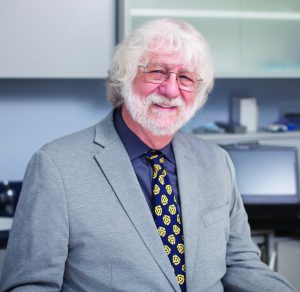Our editor-in-chief, Paul Feuerstein, DMD, discusses a few of the new technologies capturing our attention this year.

Paul Feuerstein, DMD. Editor-in-chief of Dentistry Today.
Q. Why is this year different from all other years?
A. In the first quarter of the year, we saw many new technology innovations. New products and processes are appearing for the first time, and they are game changers. Let’s look at the categories: intraoral scanning; 3D printers; new printed materials; new orthodontic workflows; and, probably the biggest, artificial intelligence (AI).
Q. What is new in scanning?
A. There are new models from old and new companies. Due to overseas R&D, the price point of the newest units are dropping, and in fact, a few are now under $10,000. Further testing is certainly required but, at a glance, they seem to work well. The legacy companies are adding features like AI in the software, wireless models, reduction in size and weight, and value-added software. These software modules are very useful. Caries detection with the scanner can be done with some of the models using a system similar to transillumination. This allows you to see fractures and incipient caries that would not be spotted in your 2D radiographs. Some allow you to take HD intraoral photos that rival the best cameras. There are methods to video capture a patient moving in lateral excursions. Some allow a “differential” program, which superimposes scans taken at various times. This allows you to see changes in things like occlusal wear, increased abrasion/abfraction, gingival recession, and more. As each company adds a new module, other companies follow, so it would be foolish to give you that list today as it will be different tomorrow.
Q. What is new with 3D printing?
A. Before you dive into this amazing world, you have to understand a few things about the process. You don’t just plug a printer in and start creating restorations. You start with a scan and then have to send that to a computer with “design software.” If you are printing standard restorations such as occlusal guards, some of the software will set up the product almost automatically. You will have to decide what material you want to use and, thus, have a specific resin for that. How about a custom denture tray, another resin, or a surgical guide? These are not automatic. All of a sudden, you’ll need to import a CBCT scan—in some cases, an intraoral scan to be superimposed—and then use a program that will help you choose the proper size and location of the implant. Even with AI, this does take training and time and, again, another resin. Printed dentures require more software and more resins. Then there is the product you take out of the printer. It has to be cycled through 2 alcohol washes and cured in a curing “oven,” and then there is the “sprue” removal and polishing. It takes a lot of steps and time and a person to do all of these things. A couple of companies have automated post-processing, but there is still the “finishing” time. New printers are faster, can use more and multiple resins, and have larger “build plates” to create multiple restorations at once.
Q. What can you print?
A. Right now, anything that we make in acrylic can be printed. However, there have recently been new materials that are FDA-approved for ceramic crowns. I believe at this time we are only talking about single units and not long spans, but that is on the horizon. A very interesting new resin and process seems to have arrived that will allow us to directly print clear aligners. This eliminates the current process of first printing a model and then an acrylic “suck down”. Of course, you will need special software and time.
Q. So how smart is artificial intelligence?
A. The initial programs are helping us read our daily radiographs. They can spot caries, open margins, basic bone loss, and a lot more. Although all practitioners can certainly read these, our office workflow and equipment could fail us. “Hey doc, can you check this hygiene patient?” You drop the handpiece, run in, say “Hi, how’s the family?” and whip through the images on the screen. One thing we have found is that there is not consistency in monitors nor the computer graphic cards. You might see different outcomes on different workstations. The AI instantly looks at all of the images digitally in seconds (not what is displayed on the screen) and highlights areas of concern. It might see something subtle that you could have overlooked. Is it telling you that this is a definite issue? No, just take a closer look at it. AI is now expanding to reading CBCT. Keep your eyes on that.
Or what about the AI program that listens to your office phone calls and analyzes the conversations? One program actually gives a summary of the call in about a minute and can tell you that if you had just said a different phrase, the patient might have appointed for a certain procedure instead of saying “I will call you back.” And that’s just one thing it can do.
Another AI process allows you to remotely follow the progress of your orthodontic cases using remote monitoring via video calls. Imagine the cost savings of not having the patient come in for every progress check. And some will even monitor the home care and gingival inflammation changes.
Watch these pages over this year to see the details on these and other new advances in dental technology.












